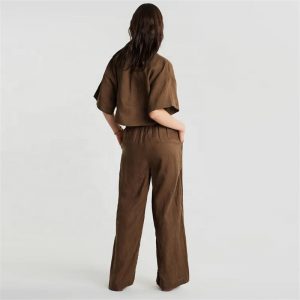The basic type of pants can be said to be worn by anyone. According to different preferences, the live pleats of the front sheet can be changed to shirring and so on. Fabric: You can use general wool, cotton, linen fabrics and chemical fiber fabrics. If the color is black, gray, navy blue, brown, etc., it is easier to combine with the top: simple and elegant, slender striped fabric is also possible.
The amount of fabric used. The table cloth 140cM width 110cm (pant length ten 10cm-15cm) 90cm width 210cm (pant length×2+15cm-20cm) starts from the front piece.
When the thickness added from the front and rear centers is calculated in proportion to the hip size, the weight can be slightly more for the fatter body, and less for the more paralyzed body. The knee height line can be determined according to the position of the drawing. If the pants are longer than the heel bone and the pants are wider, then the knee height line should be raised a little more, so that the shape of the pants is better. The inclination of the rear upright line is determined in consideration of functionality. That is, the greater the inclination, the longer the rear upright line. The difference between the sum of the front and rear stand lengths of the model and the measured net size of the stand is the margin and the amount of exercise. Under normal circumstances, the difference between 2cm~3cm is more appropriate. When it is excessive or insufficient, increase or decrease on the upper end of the lateral crotch line and the back rise line. In the case of a special body, it is better to have a larger difference. After the drawing is completed, join the front and rear inseam lines together, and check whether the rise arc is naturally round and smooth. If there is any deviation, the drawing and template should be revised.

























